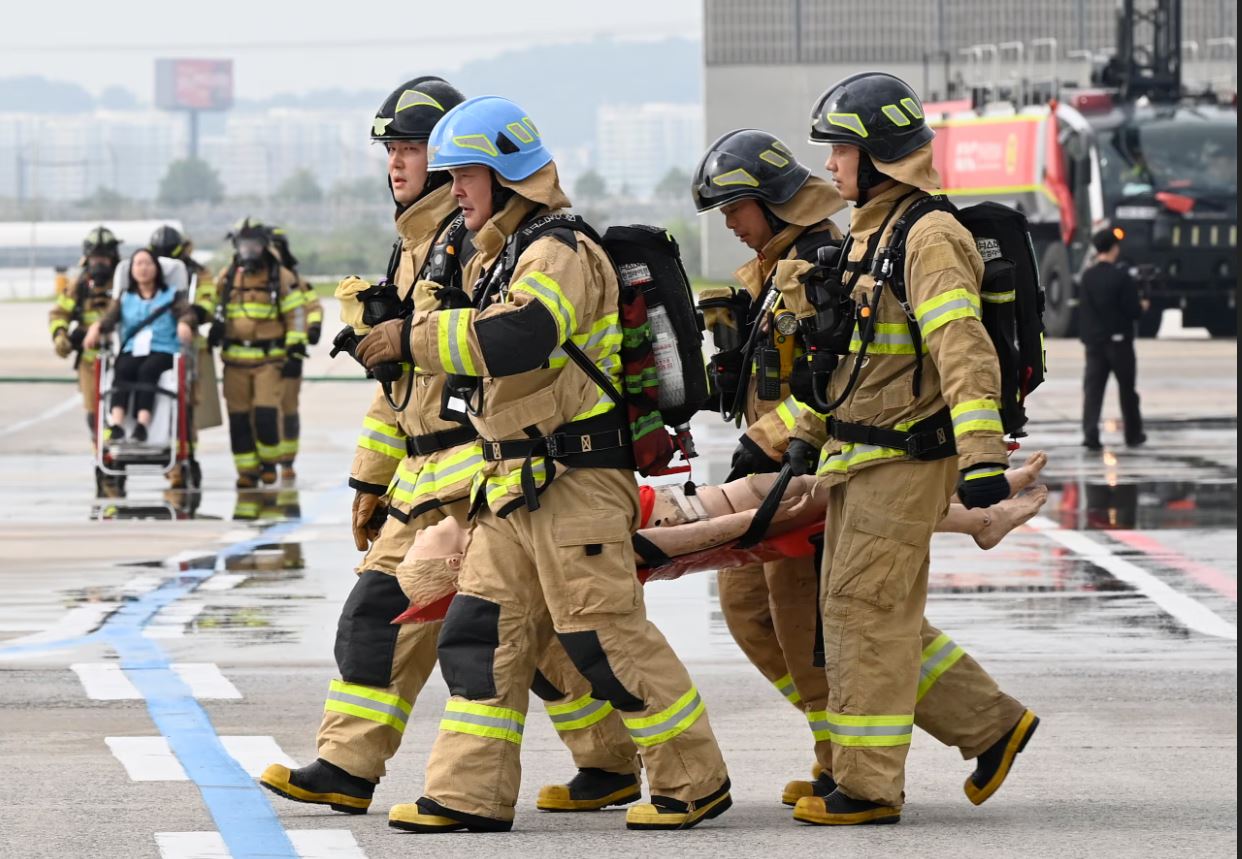A study by the South Korean National Fire Agency showed that eight out of ten firefighters in the country find their uniforms impractical. This is partly because the suits become too hot during work in the summer, causing some people to collapse. Heat is a logical consequence of firefighting, but there is no single global solution to this problem. Each country deals with it in a different way.
Firefighters selling uniforms online
Australian research has shown that heat stress often occurs among firefighters. This happens mainly during structural firefighting (62%), wildfire suppression (51%), and rescue operations (38%). Firefighters report the most discomfort in the head (58%), whole body (54%), and upper back (40%). To recover, most sit in the shade, drink water, and in some cases remove their helmet and jacket.
In Korea, however, the problem is so severe that it has become common for firefighters to purchase their own equipment. They sell their suits online or exchange them with others for a better one. Although this is strictly prohibited and employees face disciplinary action, it still happens. The issue has now become part of the political agenda in North Korea.
Although firefighters worldwide are exposed to extreme heat, each country approaches the problem differently. In Canada, the Netherlands, the United Kingdom, and Scandinavia, the focus is mainly on protocols, with medical monitoring and guidelines playing an important role. In Southern Europe, Latin America, and parts of Asia, attention is mainly given to the behavior of firefighters during heat, such as taking breaks, drinking water, and seeking shade. Countries such as Germany, Japan, and Australia tend to focus more on the materials used in the equipment. Lighter suits, sensors, and cooling vests are used more often.
Firefighting suits with smart cooling systems and sensors
Cooling vests are popular when it comes to temperature control in firefighting suits. Research has also shown that clothing equipped with liquid cooling elements can reduce the risk of overheating by 91%.
However, using cooling vests in practice is not as easy as it sounds. In 2023, researchers from the School of Textile Science and Engineering at Tiangong University (China) and the School of Fashion and Textiles at RMIT University (Melbourne, Australia) collaborated to develop a firefighting suit with a smart cooling system. The goal was to design a suit that could cool itself automatically when the temperature rose.
The suit was found to lower skin temperature by 2 to 3 degrees and delay heat exhaustion by 15 to 20 minutes. The results were promising, but unfortunately, the additional weight that comes with this technology makes it difficult to apply in practice.
Firefighter suits with sensors
Due to the practical limitations of cooling elements, fire departments are increasingly opting for suits equipped with sensors. In Italy, researchers recently completed a study on how wearable sensors can monitor the heat load of firefighters. A vest and wristband monitored heart rate, respiration, body and ambient temperature, movement, and humidity in real time. The results were transmitted via Bluetooth to a tablet and proved to provide stable measurements, while the firefighters experienced no discomfort from the sensors. As a result, more and more countries are working on the implementation of sensors in firefighting gear.
Meanwhile, South Korea is also working on the development of firefighting suits equipped with sensors that measure the temperature and heart rate of the wearer. In addition, they can also measure ambient temperature and CO concentration. It may only be a matter of a few years, but eventually, firefighters will once again be able to do their work safely.




















